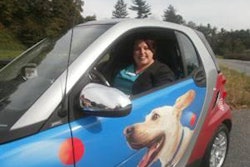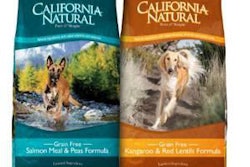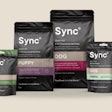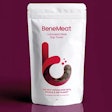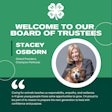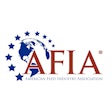Rolf C. Hagen immigrated to Canada 56 years ago, bringing his import/export pet product business with him. The company, Rolf C. Hagen Inc., is now a large privately held pet product manufacturer, headed by his son, Rolf Hagen Jr. An interview by Pet Product News International caught up with Hagen Sr. before his death, and his son, Hagen Jr.
After completion of his schooling, Hagen Sr. began an apprenticeship in importing and exporting raw materials for the fish and petfood industries in Hamburg, Germany. During the apprenticeship, Hagen Sr. sold petfood ingredients to contacts in countries around the world, allowing him to network with companies like Tetramin and Vitakraft in Germany and Hykro in Denmark.
"These three major manufacturers of excellent pet products had one thing in common: They had established good markets in their home countries and some European countries, but had no sales to North America. What’s more, the Hamburg trading house had difficulty getting ready access to some Canadian specialty seeds, such as sunflower, rape and mustard, Hagen Sr. said. "After successfully completing my apprenticeship, I could not make ends meet with the salary offered, and my decision was an easy one: Leave the country and try my luck elsewhere."
Hagen Sr. said the USA was his first choice for relocation, but that due to the draft in 1955, he did not want to be sent back to Germany so he opted for Montreal, Canada, instead. In September 1955, Hagen Sr. attended his first pet trade show in the New Yorker hotel in New York City, hosted by the National Association of the Pet Industry. Here, he met Julius Cohen of Spartan Distributor, who gave Hagen Sr. his first US order for a shipment of pet supplies from Hykro of Denmark.
When asked about joining his family business, Hagen Jr. said: "There was never any doubt about joining the family company. All of the kids started working at Hagen at 16 and we spent all of our summers in the warehouse picking orders, keeping shelves filled or working at the plant. Later, we worked in the office and took orders or helped the receivable team with the daily deposit—a little bit of everything. I have a memory of telling my father that since we shared the same name all we have to do is change the middle initial of the company!"
In 2004, Hagen Jr. took over as president of his father's company. Hagen Jr. said the company transitioned from pet product distributor to manufacturer after a number of pet industry acquisitions, including the sale of Hykro to Carnation and later, to Nestle, the sale of Metalframe to Mattel, and distribution and manufacturing aqcuisitions by Central Garden & Pets. Hagen Industries Ltd. set up manufacturing facilities in Montreal, Canada, and Hagen Pet Food Inc. set up operations in Waverly, New York, USA. Initially, the companies focused on aquatics, reptiles, birds and small animals, but have since branched out to the dog and cat product market with the Dogit, Nutrience and Catit pet product lines.
Hagen Sr. said that some highlights of his career were being voted into the American Pet Products Manufacturers Association Hall of Fame in 1999, and earning a Lifetime Achievement Award from the Pet Industry Distributor Association in 2003. Hagen Sr. is also an honorary member of the Canadian Pet Industry Association, of which he is one of the founders.
"More needs to be done to make known and to promote the joys, pleasures and educational values of pet ownership. Parents must be convinced of the benefits of letting their children keep hamsters, Guinea pigs and other small animals, an aquarium with some life bearing community fish or a well-kept terrarium," said Hagen Sr. "The elderly and lonely folks must know about the precious companionship a budgie, canary or other cage bird, a cuddly cat or a loyal dog will provide."
On the topic of the company's expansion, Hagen Jr. said: "With every company, your strength can eventually become your weakness. The days of being a generalist are numbered and increasingly we see that specialization is required. Some companies get their start by being great at one thing and then go from there. Our roots are a little different and as you mentioned we offer nearly everything possible for pets. But that is our weakness as well.
"For example, we have improved our dog and cat product mix tremendously but are not considered, at least in the U.S. market, as a dog and cat company. It will take years to change that perception. We have changed our overall product mix more in the past five years than we did in the 20 before that. But is it enough? The market moves quickly and when you compete against 'everybody' it is hard to get all of it right.
"Our focus over the next years will be to reconcile our ranges and focus on the nuts and bolts of our strategy. We need to make it easier to deal with us—we have made huge investments in operations and are very well managed in that area. High fill rates, perfect shipping and competitive prices are a given today. We have nearly all of this right. What we need more of is online training, in-store merchandising services, B2B platforms—even proprietary POS systems—as we feel our independent customers will need this from their key suppliers. We need to make our customers successful. I think we have enough product and now need to support it better. That will be our focus."
Hagen Jr. said he is unsure of whether the pet humanization trend will continue to grow as it has, though continued innovation will mean new pet product replacements. As consumers become more educated, Hagen Jr. predicts the market share for organic and all-natural petfoods will grow, subject to the amount of growth in pet ownership.
Hagen Jr. said: "We believe a great opportunity is aquatics. Aquatics today are under a lot of pressure, but we have to also understand that there are less store fronts doing it right...The second thing that needs to happen is the way aquatics are merchandised within the larger pet retailers. Simply put, we need to find a way to sell an aquarium to a dog owner. The industry needs it and so do our retailers. We must inspire the consumer and not confuse them.
"Lastly, we need to improve the livestock offer and sell hardier fish—species that are not overbred or transshipped. This is possible; other countries have proven that. Aquatic differentiates pet specialty from the mass channel—as they focus nearly exclusively on dog and cat. The biggest challenge will be to find a way to convince our retail customers to give aquatics a proper opportunity—literally to give it the oxygen it needs. We are excited about the prospects of doing this right and seeing what happens."



